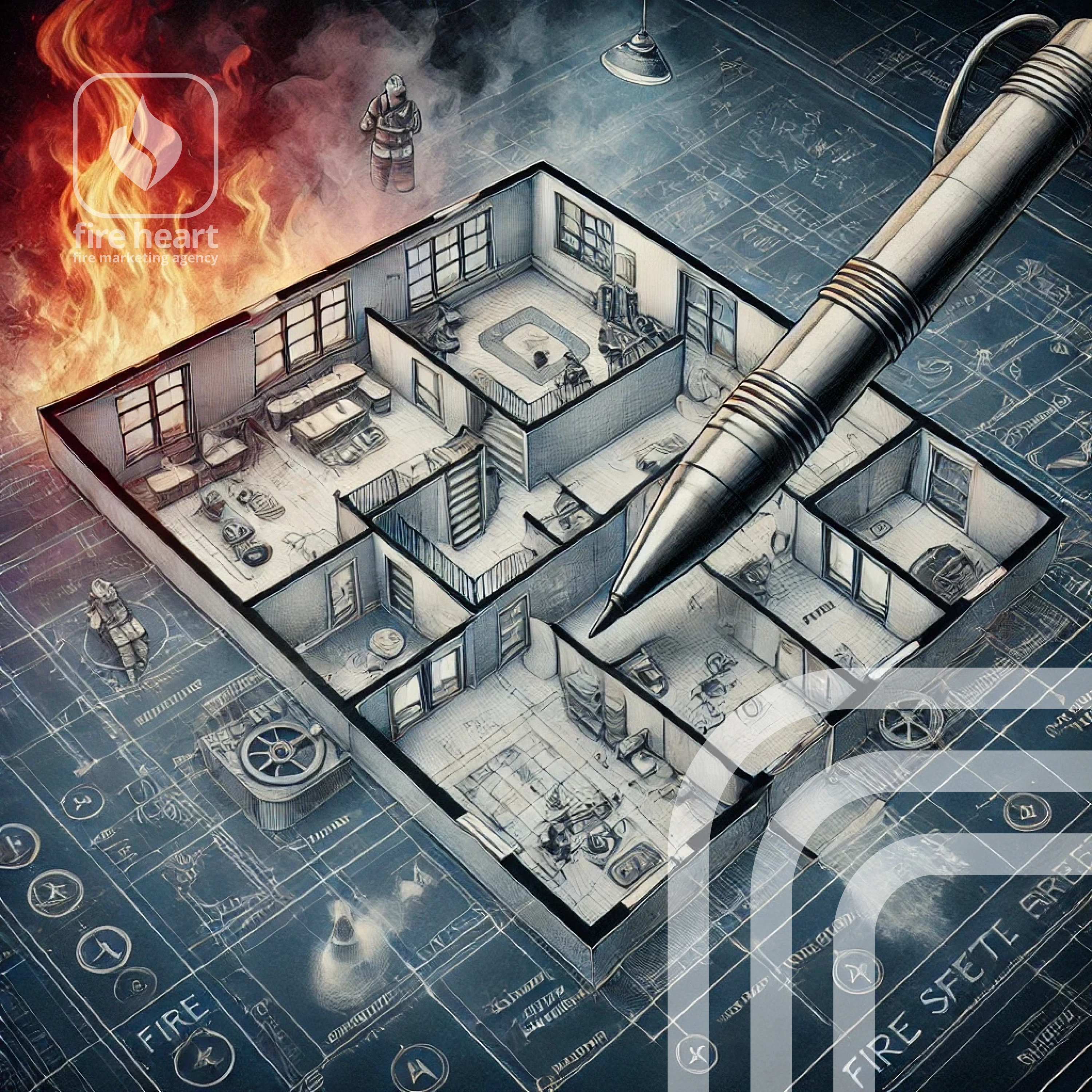
Blueprints of Salvation: Designing Fire Safety from the Ground Up
If there’s one thing humankind has mastered, it’s building things that burn like a funeral pyre at a Viking send-off. We stack wood, line it with flammable insulation, lace it with faulty wiring, and then scratch our heads when it all goes up in smoke. And when the flames lick the sky, we shake our fists at fate instead of the fellow who thought fire safety was an optional feature, like a cup holder in a cheap car.
But let’s not despair — there’s a science to salvation, and it starts at the very root of construction. Fire safety design isn’t about throwing a few extinguishers in the corners and hoping for the best. No, sir. It’s about laying the foundations of safety before the first brick is even kissed by mortar. Let’s dig into the blueprints of salvation, so you don’t end up on the front page as the cautionary tale of the year.
- The House of Straw, The House of Sticks, and The Fool Who Built Both
- The Great Escape Plan: Because Running in Circles is Not a Strategy
- Sprinklers: The Unsung Heroes of Firefighting
- The Fire Alarm Conspiracy: Why People Ignore the Sound That Saves Lives
- Alert people fast enough to escape.
- Not cry wolf every five minutes.
- The Foolproof Fool Test: Making Safety Simple for the Unsafest Among Us
- Fire extinguishers should be where people can actually find them, not hidden behind a filing cabinet.
- Escape plans should be posted like treasure maps, because in a fire, they are.
- Doors should unlock automatically when alarms sound, not require a secret handshake and a prayer.
- The Real Cost of Cutting Corners
Some people think fire safety begins after a building is standing tall, but that’s like trying to invent a parachute after you’ve jumped out of the plane. Fire safety starts with the materials. Concrete, fire-rated drywall, steel framing — these are the trustworthy cousins in the family. But if you insist on building with kindling and wishful thinking, don’t be surprised when you’re left with nothing but soot and sorrow.
If you’re looking to build something that doesn’t double as a bonfire in waiting, follow the "Two- Hour Rule". That means walls and doors should resist fire for two hours, giving folks inside time to either douse the beast or flee like their shoes are on fire—because they might be.
Every building ought to have a way out, and preferably more than one. Yet, every year, architects design buildings where a rat in a maze has better chances of finding daylight than the poor souls inside. Exit routes should be clear, well-lit, and free from obstacles—unless you consider a flaming death to be an "obstacle".
Fire doors must open outward, fire exits should not be locked tighter than a miser’s purse, and stairwells ought to be built like they actually expect people to use them in an emergency. And if you have an escape ladder? Make sure it doesn’t require an Olympic gymnast to deploy it.
Some folks put more effort into designing a chandelier than installing a proper sprinkler system. But let me tell you, when flames start dancing through the ceiling, a good sprinkler will be worth more than a hundred panicked prayers.
Sprinklers reduce fire-related deaths by 87% — that’s not an opinion, that’s a cold, hard fact. And yet, many buildings treat them like an afterthought. Water damage may ruin your sofa, but fire damage will ruin your whole existence. Choose wisely.
We’ve designed fire alarms that can wake the dead, and yet, people sleep through them like a lullaby. Why? Because half the time, they go off for burnt toast, hot showers, or some lunatic pulling the alarm for sport.
A well-designed fire alarm system should do two things:
Smart fire detection systems are the future, but until then, folks need to treat alarms with the respect they deserve. If an alarm blares, don’t roll your eyes and wait to smell smoke — move like your life depends on it, because it probably does.
Let’s be honest—some people would find a way to set water on fire if given the chance. That’s why fire safety design must be idiot-proof.
If your fire safety design assumes common sense, you’ve already failed. Design for the fool, and you’ll save the wise.
They say fire safety is too expensive, but so is rebuilding a burned-down building. The cost of installing proper fire protection is pocket change compared to losing lives, property, and your reputation.
Fire safety isn’t a luxury; it’s a necessity. And if you design buildings like you actually expect people to live, work, and sleep in them, you might just prevent the next catastrophe.
TheFinalWord: Build Smart, Stay Safe, and Don’t Become a Headline
The best fire safety designs are the ones that never make the news — because they work. If you build with safety in mind from the first sketch to the last nail, you won’t need to rely on luck, fate, or firefighters working overtime to save your hide.
So, dear architects, designers, and building owners — choose wisely. The lives you save may be your own.
Fire Heart | Fire Safety Marketing Agency
Safeguarding Lives, One Design at a Time
Author:
Pavlo Lapikov